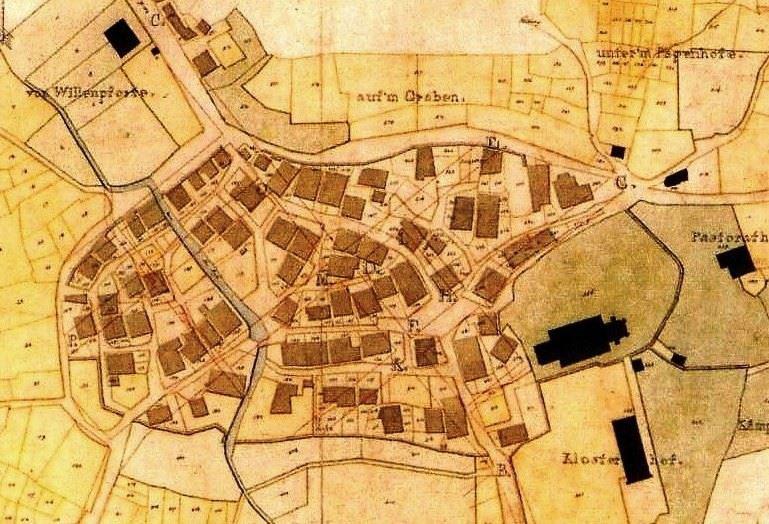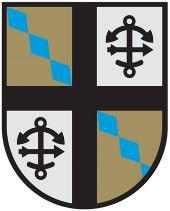0 The history of Drolshagen
Mühlenteich car park - roundabout - entrance to town (start and finish of the tour)
Today the city of Drolshagen consists of the old town and a further 57 villages or settlements with altogether more than 12,000 inhabitants covering an area of 67 km². Permanent settlement probably began in the 9th century. In 1184 the settlement was documented for the first time and in 1477 it received the city charter. The Romanesque church dates from the 11th century, the monastery was founded in 1232.
The town, which belongs to the district of Olpe, Westphalia, lies at altitudes between 350 and 500 m at the Lister/Bigge reservoir in the low mountain range landscape of the Rothaar Mountains. About 40% of the area is used for agriculture and 40% are forests.
In the High Middle Ages, the region belonged to the Ravensburger dynasty, the family that Mechthild came from, who married Count Heinrich III of Sayn. After his death she sold the property in 1248 to the Archbishop of Cologne Konrad von Hochstaden. From then Drolshagen belonged to the Duchy of Westphalia, which in turn was affiliated to the Electorate of Cologne. The noblemen of Drolshagen lived on site.
Although the town was still characterised by agriculture until the 20th century, industrialisation had already started in the second half of the 19th century and increased from 1903, when Drolshagen was connected to the railway network. Since 1969 Drolshagen has been twinned with the Dutch municipality Joure, today part of De Fryske Marren.
Of the surrounding villages that belong to Drolshagen it is especially recommended to visit: The beautifully situated water mill in Eichener Mühle, already documented in the middle of the 13th century. The chapel St. Michael in Sendschotten with a statue of Our Lady, which is carried in a procession, the "Ümmegang", through fields and meadows at the beginning of July. The old chapel "Maria Geburt" in Hützemert and the baroque pilgrimage chapel "Rosenkranzkönigin" in Wenkhausen. However, all churches and chapels are worth visiting and there are many beautiful places to visit in the region’s natural environment.
The Drolshagen coat of arms is divided into four sections by the Cologne cross. The three blue diamonds in fields one and four were the coats of arms belonging to the lords of Drolshagen. The anchor in fields two and three is the symbol of St. Clement, the patron saint of the parish church. The arrow within the anchor is in remembrance of St. Sebastian, to whom an altar was dedicated by the Schützengilde when the town was founded.
The Drolshagen coat of arms is divided into four sections by the Cologne cross. The three blue diamonds in fields one and four were the coats of arms belonging to the lords of Drolshagen. The anchor in fields two and three is the symbol of St. Clement, the patron saint of the parish church. The arrow within the anchor is in remembrance of St. Sebastian, to whom an altar was dedicated by the Schützengilde when the town was founded.



